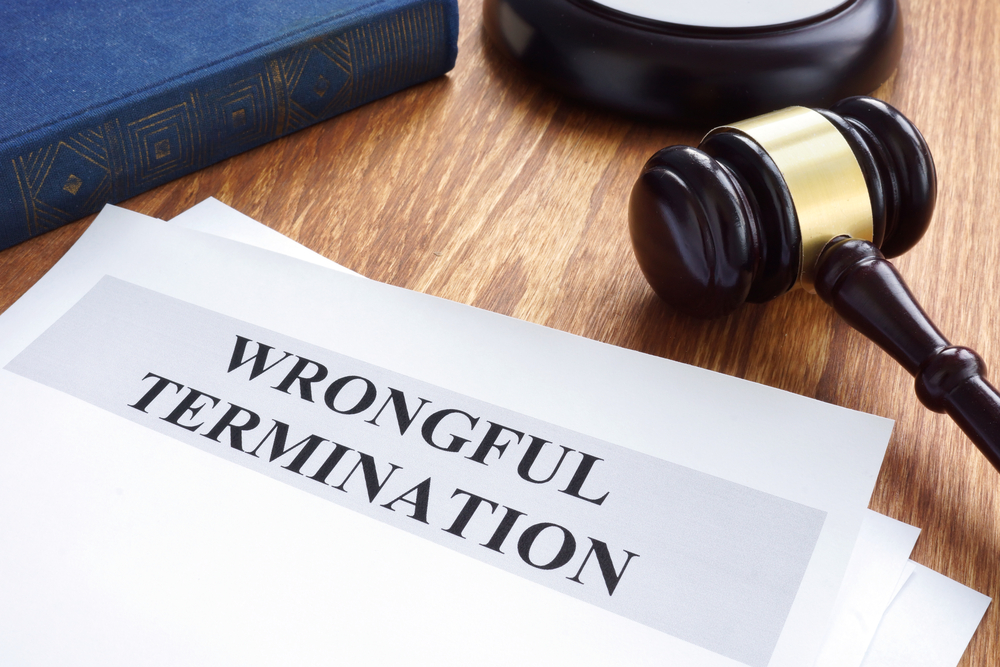

 The majority of US states are at-will employment states. This means that employers and employees alike can terminate an employment contract without needing to provide a firm reason for ending the employment. This can make it difficult for employees to determine whether or not they have any rights when they’re unexpectedly fired from a job. However, there are certain circumstances that protect you from being fired unfairly (known as wrongful termination). How do you know if your circumstances qualify as wrongful termination, and what do you need to do to pursue legal action against your former employer? Keep reading to find out.
The majority of US states are at-will employment states. This means that employers and employees alike can terminate an employment contract without needing to provide a firm reason for ending the employment. This can make it difficult for employees to determine whether or not they have any rights when they’re unexpectedly fired from a job. However, there are certain circumstances that protect you from being fired unfairly (known as wrongful termination). How do you know if your circumstances qualify as wrongful termination, and what do you need to do to pursue legal action against your former employer? Keep reading to find out.
Protected Categories and Circumstances
While employers don’t generally need a concrete reason for terminating an employee, there are certain reasons that they can’t use for firing an employee. This includes protected categories like race, gender, ethnic background, religion, disability, age, or sexual orientation. For example, if a woman becomes pregnant while employed, her employer cannot fire her due to her pregnancy (considered a temporary disability).
Additionally, it is illegal for an employer to fire an employee because of a legal complaint already filed against the employer. For example, an employer cannot fire or otherwise punish an employee for reporting sexual harassment, seeking to form a labor union, or reporting the business for suspected unlawful activities. This is considered “retaliatory” action, and is illegal.
How Do You Prove Wrongful Termination?
Because an employer doesn’t necessarily need a reason to fire an employee, it can seem difficult to prove that you were wrongfully terminated. This is generally proven based on the timing and circumstances of your firing.
For example, let’s say that you announced at work that you were pregnant. Shortly thereafter, your manager called you into their office to ask if your pregnancy and new baby would impact your ability to do your job. They questioned you thoroughly about whether or not you would be returning to the office after having your baby. Despite your assurances that your performance would not be impacted, your manager did not seem very convinced. You were dismissed from the meeting, but from then on out, noticed that your manager took every opportunity to criticize your work until, a few weeks later, you were fired. This sequence of events would indicate that you were fired because of your pregnancy, and your manager’s belief that you could not perform your duties when pregnant or after having a baby.
Let’s discuss another example, this one related to retaliatory action: Your work does not have a labor union, but you believe that you and your coworkers could benefit from forming one. You start to organize the effort to create your own union, and encounter strong opposition from management. The supervisory team and officers discourage every employee they can from joining the union. They soon realize that you’re the key organizer, and you start to be assigned to the worst shifts despite having seniority; your performance is criticized much more heavily, despite not changing anything about how you work; and your manager tells you in a one-on-one meeting that you should stop trying to organize a union and focus more on your work. Soon thereafter, you’re fired, with the explanation that your performance has declined.
In this case, your employer would likely have records that your performance review scores had dropped and that you’d received warnings. This gives the impression of a legitimate termination. However, if you can prove that your performance did not actually slip, and the low scores were in themselves a retaliatory action, then you could build a case for wrongful termination.
How to Build Your Case
If you’re confident that you have a wrongful termination case on your hands, what can you do to prove it? Here are the steps you need to take to build your case:
Once your complaint is filed, your attorney will guide you through the discovery process and subsequent actions against your former employer. If you believe you were wrongfully terminated, contact The Harr Law Firm today for a consultation with one of our employment attorneys.
Article provided by: